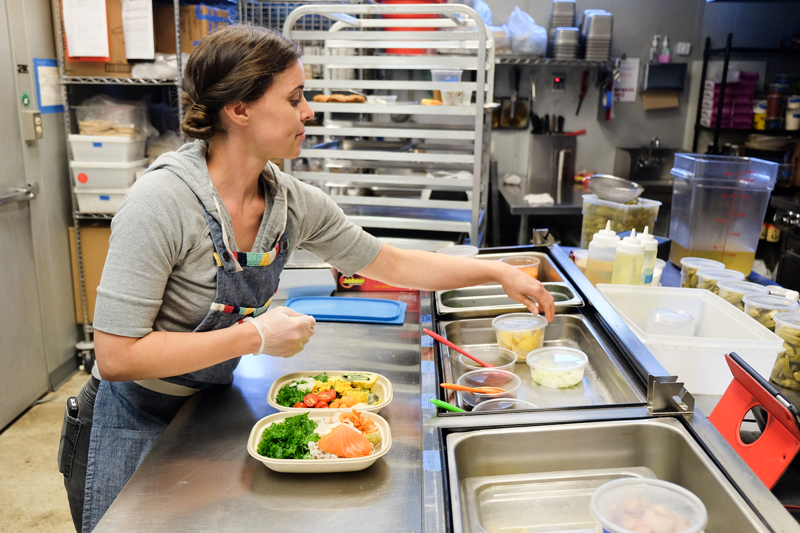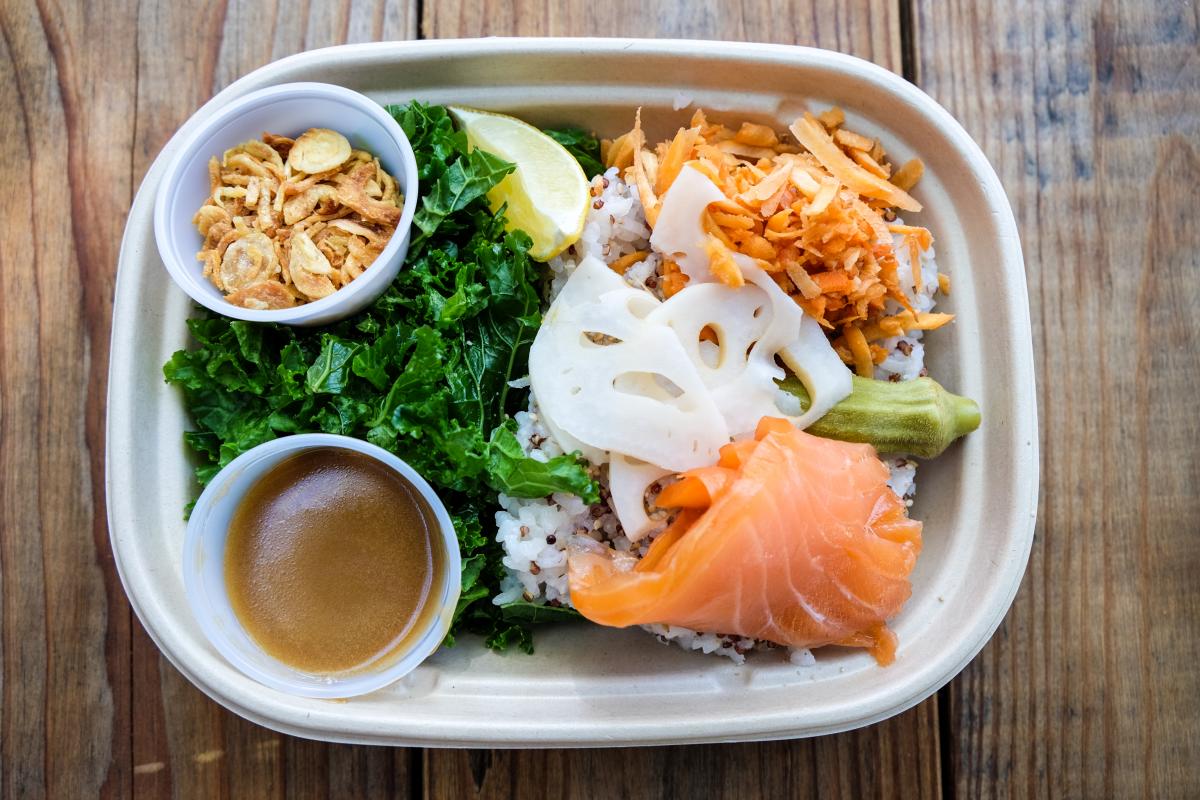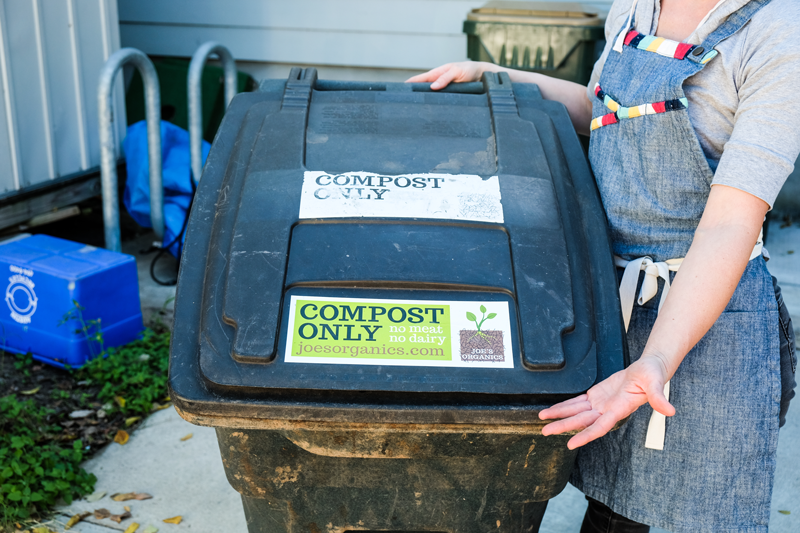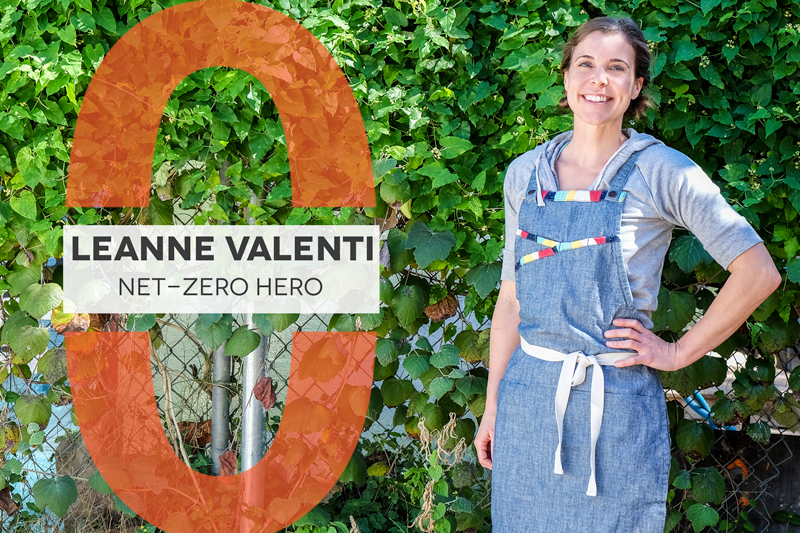Net-Zero Hero: Leanne Valenti
I’m helping to make Austin Net-Zero by reducing food waste at my business, Bento Picnic!
Meet Leanne Valenti, owner of Bento Picnic — a local Austin food business founded in 2015. At Bento Picnic, Leanne and her team create fresh, Japanese-inspired meals for Austinites to enjoy. They put a lot of thought into the fresh ingredients they choose for their dishes, and also take great care to waste as little food as possible in the process. Through creative and diligent management of their inventory, Bento Picnic manages to divert most of its food waste from the landfill.
We spoke with Leanne about her commitment to Net-Zero, what her toughest challenges have been, and what advice she has for others looking to live Net-Zero.
What inspired you to take action?
My first exposure to food waste and zero waste initiatives came in 2013 when I was working at the Natural Epicurean Academy and serving on the Food Surplus and Salvage Working Group. We frequently engaged in discussions about how we could support businesses and organizations to comply with the City’s zero waste goals, and those brainstorming sessions sparked my desire to incorporate zero waste principles into my own life. I learned that if food is salvaged quickly enough, before it becomes food waste, it can be used to feed hungry people or used for compost. That changed the way I thought about food and waste, and it became a central part of my business philosophy when I started my company a few years later.

Leanne preps food in the kitchen at Bento Picnic.
How did you do it?
I’ve always been passionate about cooking healthy, nourishing food, but my greatest inspiration for Bento Picnic came during my time living and studying in Japan. I got to experience the incredible Japanese food culture, which honors the principles of Washoku. Those principles are:
- Start with wholesome ingredients.
- Fill at least half of your plate with seasonal, plant-based foods.
- Use five colors, five tastes, and five elements in every meal, aiming to eat 30 different foods per day.
When I came home, I started preparing lunches for my friends and family based on what I learned in Japan. Everyone loved the fresh, delicious bento meals I was creating, so I knew I was onto something! When the time came to set up processes and procedures for my business, I reached out to food rescue and composting services and sought out food-safe products from the get-go.
What's been the toughest part?
We work with a lot of fresh, perishable products, so food waste can definitely get a bit tricky. We constantly collect and analyze our sales data because the amount of food that is wasted depends on how quickly our products move. To help track our inventory, we created a spreadsheet that shows the amount of each ingredient we need based on the number of bentos we're building. We also feature seasonal pickles on the menu, which can be made with almost any vegetable. That way, if we do end up with too much of a particular vegetable, we'll preserve it in a pickle brine and use it in a special recipe.

A finished dish at Bento Picnic, featuring salmon.
Have there been any unexpected benefits?
I love creating responsibly-sourced, healthy food for our customers to enjoy and feel good about. The peace of mind I get from the fact that our food doesn’t go to waste, while also knowing that we will have enough to serve our customers, is wonderful. If you think about it, less food waste also benefits our business financially. The less waste we have, the less money we need to spend on our ingredients — which ultimately translates to more profits!

Leanne poses with the business's compost bin.
What advice do you have for others?
First, get to know the resources that are available to you. There are so many great folks in town whose mission it is to help your business (or home!) achieve zero waste. Also, keep track of inventory and sales records so you can refer back to historical data when purchasing and producing perishables. After all, each of us has a responsibility to help reduce what we put in the landfill.
According to a recent study, almost half of everything Austinites send to the landfill is compostable material. You can help change this statistic! For example, learn how to compost your food waste, donate food, raise a few backyard chickens, or preserve and freeze food to extend its life. Let's all do our part to reduce food waste in Austin.
To learn more about Austin's net-zero goal and the actions you can take to support a greener community, view the Austin Climate Equity Plan.
Share your Net-Zero contributions with us on X (formerly Twitter) or Facebook, and use #NetZeroHero. If you know a Net-Zero Hero (or heroes!) who should be recognized for their efforts, send your nomination to climate@austintexas.gov.


